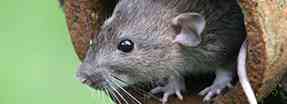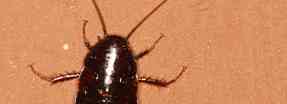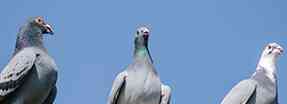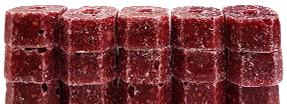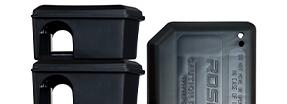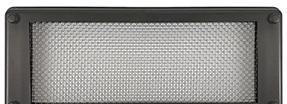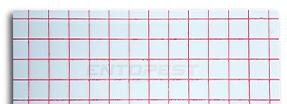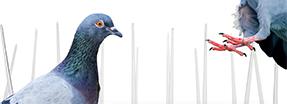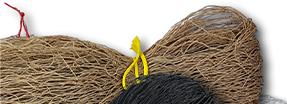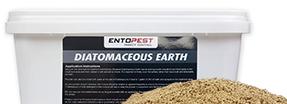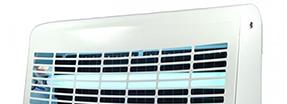
Rodenticide is commonly known as rat or mouse poison.
Rodenticide is an excellent and reliable control method for the fast eradication of rats of mice; used against an established infestation will often result in total removal of the population. However, it does come with considerable risks that users should understand, especially to non-target animals. It’s essential only to use rodenticide when other treatment methods are not showing success; using traps or simple proofing may remove a rodent issue without having to use poisons.
Understanding what type of active ingredient or formulation should be used can be complicated, and using the wrong product can cause complications with any treatment.
Following instructions on the rear of rodenticide packaging is a vital part of any treatment; the following information is provided as additional guidance only.
Can I use rodenticide to control any species of rodent?
No. The species of rodents that we are allowed to control in the UK are typically only the Brown Rat (Rattus norvegicus), Black Rat (Rattus rattus) & House Mouse (Mus musculus). Under no circumstances are you allowed to use rodenticide to control any other animal species.
It is also important to note that the packaging will detail what species you are allowed to control, it is important to follow the instructions on the packaging. Often the black rat is omitted from the packaging however as they are rare within the UK it is unlikely that you will experience them.
What Active ingredient should I use?
The active ingredients within the product are the essential part of treatment in the UK we have 3 ingredients approved for the UK:
Difenacoum – A second-generation multi-feed rodenticide; this active ingredient is incredibly potent against mice but also can be used for the treatment of rats. Some areas of the UK are showing resistance against difenacoum.
Bromadiolone – Similar to the above, this is a second-generation multi-feed rodenticide but works better with rats; this product still shows success against mice. Some areas of the UK are showing resistance against bromadiolone.
Brodifacoum – A single-feed rodenticide that controls both mice and rats within a single take and is especially useful when treating rodents within areas of resistance. This rodenticide can have several negatives, including the risk to non-target animals.
Multi-feed rodenticides are the most popular method as the feeding rodents will not associate any illness with the feed; this is useful when baiting against large populations. Single-feeds are far more aggressive, and the target rodent only has to eat a small amount of the bait to die; whilst this may sound preferable to multi-feed the risks of other animals dying from eating the bait or the rodent carcass should not be understated. Rodents that survive single-feed rodenticides are likely to be shyer of consuming different rodenticide baits.
Before undertaking any treatment, we recommend you look at your address for any recorded resistance in your area. This is a valuable reference that can quickly highlight if rats or mice are resistant to difenacoum or bromadiolone. This site can be found here.
We recommend that users use difenacoum or bromadiolone as the first treatment method (difenacoum for mice & bromadiolone for rats) For stubborn infestations or when baiting in an area of known resistance, you should switch to brodifacoum but only use this as the last resort.
colour coding: Hydrogen (white), Carbon (grey), Oxygen (red), Bromine (brown).
What formulation should I use?
Rodenticides are typically supplied in 3 types of bait; whilst they are all different in their palatability the core active ingredients (listed above) is the most critical factor in the control of rodents:
Blocks – A mix of cereals mixed in wax to create a hard block that is suitable for placement within boxes. Rodenticide blocks are the most versatile use of bait products; they can be used in damp environments including external or within cellars; they are less prone to damage from slugs and insects. Blocks have a hole in the centre which allows placement on a rod; useful to prevent rodents from removing the bait from boxes. Both mice and rats will consume blocks.
Pasta – A high-calorie mixture of cereals and pasta encased in a paper sachet. Rodenticide pasta is a valuable product for baiting mice and rats, especially when competing against other food products. Pasta sachets can be used in a wide range of bait boxes and inserted directly onto internal bait rods. Pasta is highly recommended when baiting against rodents within towns where their diet can be considerably different compared to country mice.
Wheat – Likely the most popular product used for the control of rodents by both amateurs and professionals, both rats and mice quickly accept wheat products. Wheat does have the negativity of being easily spilt and can often get damaged quickly if placed around slugs or in damp environments. Wheat is best used for treating large populations where the bait will be accepted and taken quickly.
Often individual preference of the rodents can reflect on which bait they consume; rodents that have consumed rodenticide in the past and survived may associate any illness with the formulation type; trial and error of the formulation are sometimes (but not often) required. Rats and mice will consume pretty much anything when they are breeding!
We recommend that users should use blocks within external buildings. Pasta within towns. Wheat for country properties and baiting within voids such as an attic space.
How much poison should I buy?
This is a difficult question; population sizes will vary within every infestation and competing food sources and localised resistance create variables in the treatment.
Rodent population sizes can be challenging to guage as they are often away from human habitation and can often go unnoticed for a long time after establishing; as a rough rule seeing rodents running around a property or within daylight hours is an indicator that the infestation is more significant than a singular rodent; users must presume that the infestation is established.
Initially, we recommend the placement of about 150g of rodenticide for mice and 300g for rats. It is essential to read the rear packaging to indicate how much poison should be placed and at what distance. Additional purchase of rodenticide is likely especially if within areas of high population.
If the bait is consumed quickly or in its entirety, it may indicate a larger population size, so it’s crucial to keep baiting until no other bait is taken or any activity persists.
How do I apply the bait?
Read the product label as this provides all the legal information referring to the application of the product. This will vary depending on the brand purchased.
Amateur users must use a tamper-resistant bait station. Bait stations are a valuable device for the application of bait whilst preventing non-target animals from gaining access; the boxes allow for a monitor of bait and easily replenishment. Bait stations should be used in both internal and external environments. It is essential to note the differences between bait stations and the target rodent. Mice boxes are not suitable for rats and rat boxes may be large and bulky for use within confined voids.
Professional operators, subject to a risk assessment, do not have to use a bait station in all scenarios; this is useful when baiting in confined locations such as an attic space or under a floorboard. Professional operators will typically use simple devices such as trays of cardboard boxes to help monitor bait consumption and easy removal at the end of treatment.
Are there any restrictions on using rodenticides?
Lots; especially for products approved for amateurs!
Rodenticide must only be used against the rodent specified on the label. They are usually just brown rats, black rats and house mice. Typically other species of mice are not included within the spectrum so caution should be undertaken.
Rodenticide must only be used within tamper-resistant bait stations; this is a legal requirement for amateur-approved rodenticides.
Rodenticide can only be used in and around buildings. This includes baiting around the perimeter of sheds and garages but may not include around the garden.
Rodenticide must not be used as a permanent method of control; once an infestation has been cleared all rodenticides should be removed from any baiting points.
Are there concerns for safety?
Yes but the majority of products if used correctly will result in fast and timely results. Undertaking a risk assessment will help manage any hazards present in the treatment area.
Complying with the product label and using a tamper-resistant bait station will reduce the likelihood of non-target access to the bait. Undertaking a risk assessment of the area is a vital part of any treatment; if necessary relocation of rodenticide or even switching to a different control method should be undertaken.
An important step, especially for brodifacoum, is the inspection and removal of dead carcases throughout the treatment process. Owls and other birds of prey may consume dead rodents, which can cause considerable harm through indirect consumption (commonly known as secondary poisoning).

